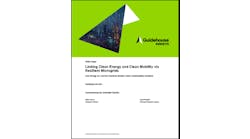By Patrick Costello, guest contributor
March 19, 2009
The American Recovery and Reinvestment Act promises to advance the U.S. energy efficiency movement with an unprecedented $26 billion infusion of funds. Of that, $3.1 billion goes to state energy efficiency programs through the Department of Energy’s State Energy Program.
Great news, right? Maybe not, says the Electricity Consumers Resource Council (ELCON) and the National Association of Regulatory Utility Commissioners (NARUC).
To receive the federal stimulus money, states must agree to set up financial incentives that encourage utilities to pursue energy efficiency programs. ELCON and NARUC fear that this promotes a “one-size-fits-all” approach to the administration of energy efficiency programs. In particular, they are concerned that these stimulus funds will sway states to implement revenue decoupling at the expense of developing a more unbiased energy efficiency program plan.
Revenue decoupling is a ratemaking mechanism that breaks the link between a utility’s revenues and energy sales. Since utilities normally profit from selling energy, it’s not in their best interest to push efficiency. Doing so reduces demand for their product. Revenue decoupling counters this problem by allowing utilities to earn a fair rate of return, and sometimes additional financial incentives, on energy efficiency programs. Decoupling has become a common way to align utility financial interests with state efforts to achieve greater energy efficiency.
The debate over revenue decoupling is central to discussion over what makes an energy efficiency program effective. Ratepayers measure success based on how much money they save. And how much money they save may depend on who runs the program.
Utilities, state agencies, third party non-profit organizations, or some combination of the three typically administer efficiency initiatives. Each state shapes its own approach. No one program design seems to be the most effective. Many highly regarded programs differ greatly from one another. But the best programs share one commonality: They are tailored to the unique policies and economic profile of the state and are based on input from a variety of stakeholders.
Critics of the stimulus bill argue that ‘the catch’ – the condition placed upon states before they can receive stimulus money – may stifle such tailoring, hinder development of a state’s full energy efficiency potential, and diminish cost savings. Decoupling creates the foundation for utilities to serve as the primary administrators of efficiency programs. By pushing for revenue decoupling, a state is arguably saying it wants utilities, not a third party non-profit or state agency, to take the lead in developing and administering energy efficiency programs. Therefore, the stimulus bill walks a fine line between encouraging states to implement only utility-administered programs and encouraging them to reform their ratemaking policy so that utilities can, on some level, contribute to the development of a sound energy efficiency program.
Decoupling is somewhat arcane, but ratepayers should be aware of how it may influence their rates as energy efficiency programs evolve.
This is the House Energy and Commerce Committee’s report where the controversial provision can be found on page 26:
http://www.rules.house.gov/111/CommJurRpt/111_hr1_encrpt.pdf
To see a breakdown of the stimulus package’s energy efficiency measures, visit:
http://ase.org/content/article/detail/5388
To learn about and obtain forms for stimulus package energy efficiency tax incentives, visit:
http://www.energytaxincentives.org/
To see how your state’s energy efficiency efforts rank nationally, visit:
http://www.aceee.org/pubs/e086.htm
Visit us at www.realenergywriters.com and pick up our free Energy Efficiency Markets podcast and newsletter.






